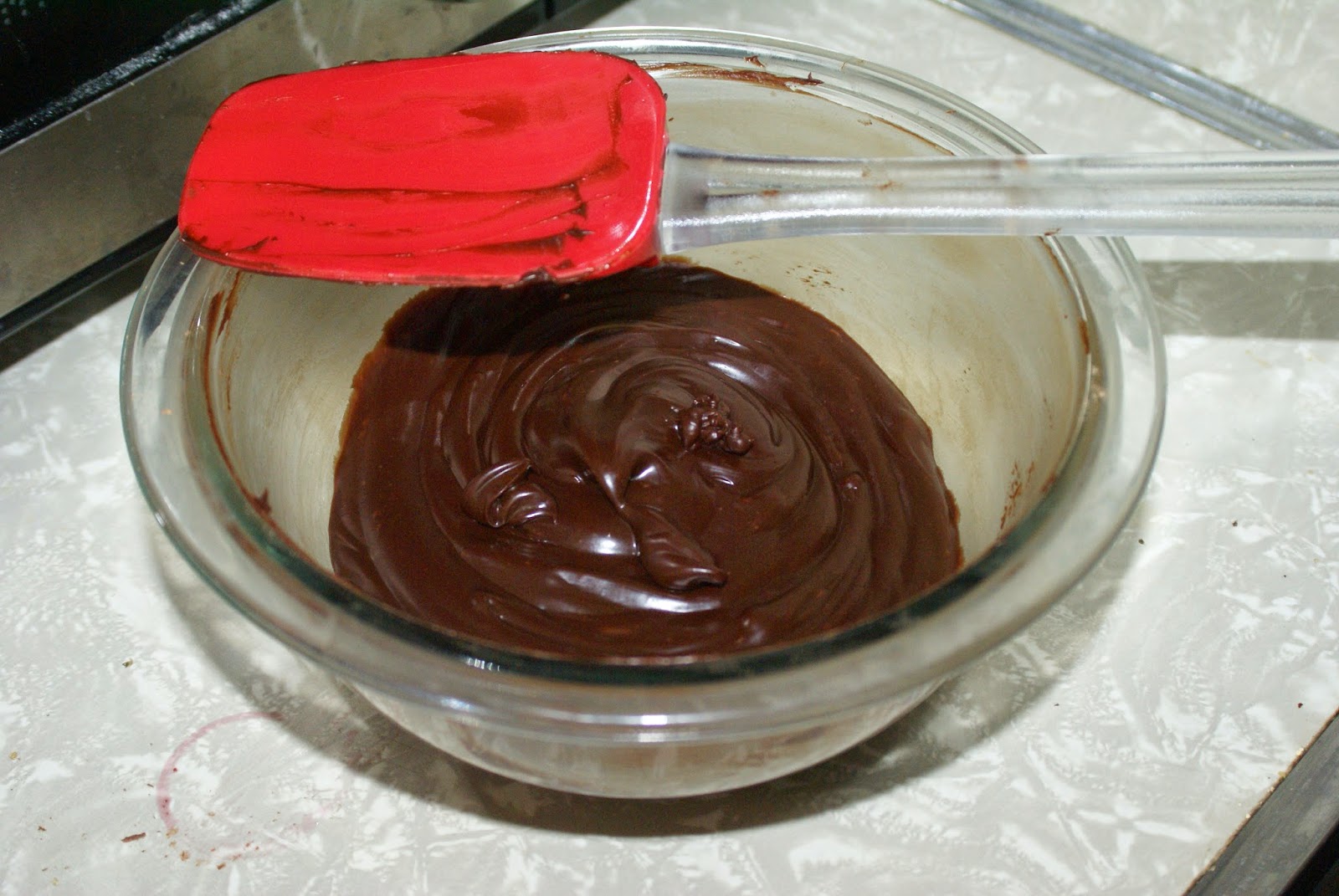Who knew that chocolate was so complicated? Simply the process of making it edible is a trick: you need to ferment the beans, blend, crack, roast, press, grind… I started reading about it, just generally, and quickly gave up any ideas I had possibly entertained about growing and processing my own. But the trickiness doesn't end there. See, chocolate is, as Jeff Potter does an excellent job explaining in his book Cooking For Geeks, a more or less crystalline solid. It's not really pretty, regular crystals like sea salt or sugar (if we want to keep it in the food realm). But it becomes important, because there are 2 types of crystals that chocolate likes to form. One looks prettier. The other forms quicker and at lower temperatures. Have you ever had the experience where chocolate semi-melts, then you pop it in the fridge or something and then it "blooms" (turns whitish)? That's the wrong form of crystal setting up. It doesn't taste awfully different (if you can get rid of the sight component, which does influence our perceptions of taste), but may have some textural differences. When you're working with chocolate, you go out of your way to make sure that these crystals don't form. Properly crystallized chocolate will set quickly, look pretty, and have a smooth mouthfeel.
 |
| Why temper matters: this is improperly tempered. |
The following recipe was adapted from a recipe for Pistachio-Kirsch truffles. I looked all over town and could not, for the life of me, find Kirsch. Cherry-flavored vodka, yes, even Cherry wine. But no Kirsch. So I bought some raspberry liqueur, crossed my fingers, and hoped for delicious.

Pistachio- Raspberry Truffles, adapted from Making Artisan Chocolates
56g 64% bittersweet chocolate (I used Ghiradelli bittersweet chocolate chips)
84g 55% semisweet chocolate (I used Ghiradelli semi-sweet baking bar)
91g heavy cream
7g light corn syrup
14g salted butter, cubed and softened
14g raspberry liqueur
chopped, toasted pistachios
64% bittersweet chocolate
To make the ganache, chop up the chocolate (56g and 84g) and set it in a bowl. In a small saucepan, combine the cream and corn syrup. Stirring over medium-high heat, bring it to a boil. Pour the cream mixture over the chocolate and let it sit for 2 minutes. Then slowly stir the chocolate until completely melted. Once it has reached 95˚F, add the butter and liqueur, and stir until incorporated. Don't over-stir!
Let the ganache set, then scoop it out into little truffle centers and let them sit overnight on a baking sheet lined with parchment paper.
Once the truffle centers have set, place the chopped pistachios in a shallow dish. Temper your chocolate, then work quickly to dip the truffle centers into the chocolate and roll them in the pistachios. Set them on a parchment-paper-lined tray until set. If your chocolate is properly tempered, it shouldn't take long at all!
They turned out quite nicely. The Ghiradelli chocolate melts so beautifully! And I was able to temper it properly; in my cold kitchen it took about 15 seconds to set, and was smooth and glossy. They were beautifully crisp to bit into, and delicious. I would have liked a little bit more raspberry flavor, and perhaps a little less pistachio; next time I might just give the truffles a pistachio base, or sprinkle them on top. And although ganache is not the focus of this blog, the ganache for these truffles was delightfully creamy and smooth. I think the corn syrup makes ganaches easier.



No comments:
Post a Comment